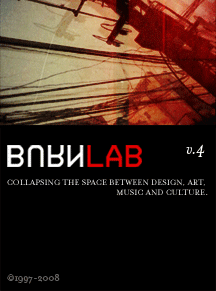Fantastic interview with Lebbeus Woods on BLDGBLOG today.
BLDGBLOG: That's actually one of the things I like so much about your work: you re-imagine cities and buildings and whole landscapes as if they have undergone some sort of potentially catastrophic transformation - be it a war or an earthquake, etc. - but you don't respond to those transformations by designing, say, new prefab refugee shelters or more durable tents. You respond with what I'll call science fiction: a completely new order of things - a new way of organizing and thinking about space. You posit something radically different than what was there before. It's exciting.
Woods: Well, I think that, for instance, in Sarajevo, I was trying to speculate on how the war could be turned around, into something that people could build the new Sarajevo on. It wasn't about cleaning up the mess or fixing up the damage; it was more about a transformation in the society and the politics and the economics through architecture. I mean, it was a scenario - and, I suppose, that was the kind of movie aspect to it. It was a "what if?"
I think there's not enough of that thinking today in relation to cities that have been faced with sudden and dramatic - even violent - transformations, either because of natural or human causes. But we need to be able to speculate, to create these scenarios, and to be useful in a discussion about the next move. No one expects these ideas to be easily implemented. It's not like a practical plan that you should run out and do. But, certainly, the new scenario gives you a chance to investigate a direction. Of course, being an architect, I'm very interested in the specifics of that direction - you know, not just a verbal description but: this is what it might look like.
Related: new Lebbeus Woods website.
In more architecture news, NY Times architecture critic Herbert Muschamp died last night at 59. I sometimes disagreed with his critiques, but he was out there making architecture and design important to everyone. He was a passionate voice and a champion of creative thinking, and a great writer who will be dearly missed.
Excerpts from the NY Times obituary by Nicolai Ourousoff:
Mr. Muschamp continually returned to analyzing the psychological forces that shape the visual world. Reviewing the Holocaust Memorial Museum in Washington in 1993, for example, he described a visit to the concentration camp at Dachau, which had a gas chamber.
"The small size of the gas chamber comes as a surprise," he wrote. "There is nothing to see besides four walls, a floor, a ceiling and the door that leads outside."
"It is when you cross the threshold of that door that you grasp the reason for visiting Dachau. You walk out into daylight, but part of you does not leave. The doorway divides you. The part that is free to walk through the door feels disembodied, a weightless ghost. You feel lightheaded, as though you have broken the law, as indeed you have. Your passage through that door has violated the design. The room was not meant to be exited alive."
--
Mr. Muschamp's reviews could also be devastating, and maddening to readers who took exception to his quirky - and, some argued, self-indulgent - voice. "Herbert's criticism was full of passion - too much for some readers," said Joseph Lelyveld, the former executive editor of The Times who hired Mr. Muschamp. "But that passion lit up his writing and the world of architecture. One of his great themes was that New York deserved real architecture, for our times - not what developers often try to pass off."
--
Some of Mr. Muschamp's fiercest attacks were reserved for the rebuilding efforts at ground zero, arguing that political concerns had trumped the city's cultural welfare and future.
In a 2003 appraisal on Daniel Libeskind's proposed master plan for ground zero, he mocked the architect's 1,776-foot Freedom Tower and a proposed promenade of heroes as "a manipulative exercise in visual codes."
"Even in peacetime that design would appear demagogic," he wrote. "As this nation prepares to send troops into battle, the design's message seems even more loaded. Unintentionally, the plan embodies the Orwellian condition America's detractors accuse us of embracing: perpetual war for perpetual peace."
--
Mr. Muschamp often reflected on the central role that gay men played in New York's cultural history, specifically the world that he entered as a young gay man escaping the homogeneity of suburban Philadelphia.
Reminiscing lovingly about Edward Durell Stone's so-called lollipop building on Columbus Circle - now undergoing an extensive redesign - in a 2006 article in the paper's Arts & Leisure section, he described his generation's experience this way:
"We were the children of white flight, the first generation to grow up in postwar American suburbs. By the time the '60s rolled around, many of us, the gay ones especially, were eager to make a U-turn and fly back the other way. Whether or not the city was obsolete, we couldn't imagine our personal futures in any other form. The street and the skyline signified to us what the lawn and the highway signified to our parents: a place to breathe free."
Wednesday, October 03, 2007
Posted by:
Unknown
at
10/03/2007 07:30:00 PM
![]()
Subscribe to:
Post Comments (Atom)

No comments:
Post a Comment